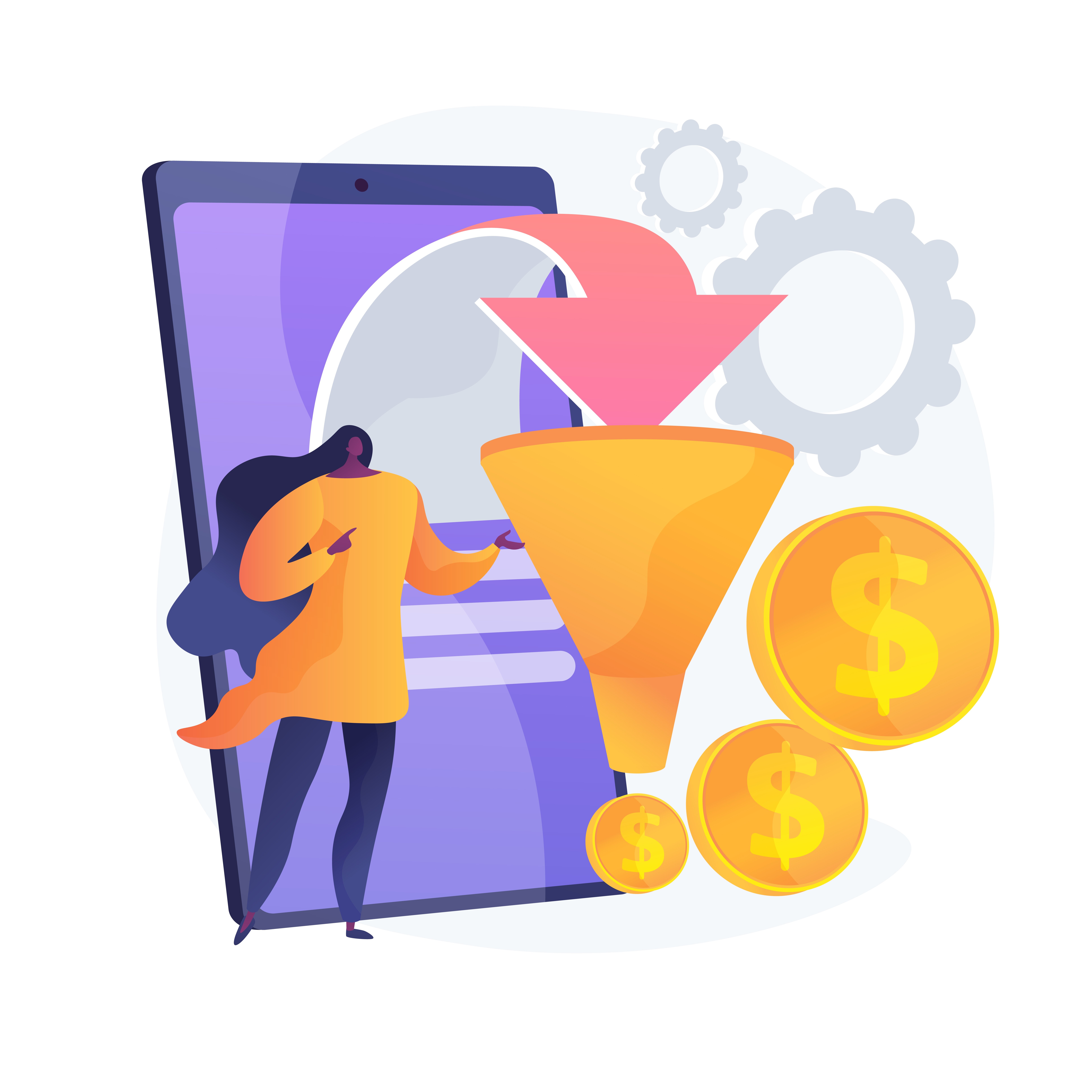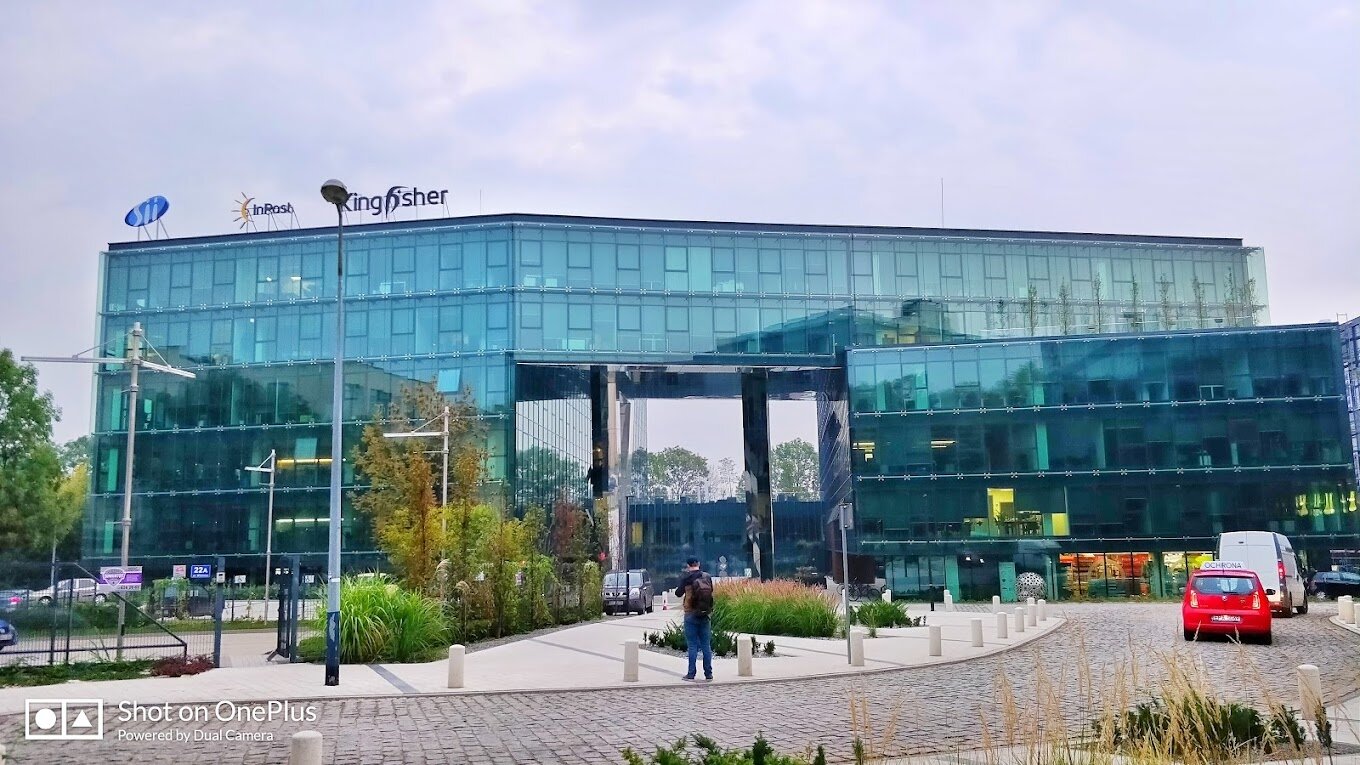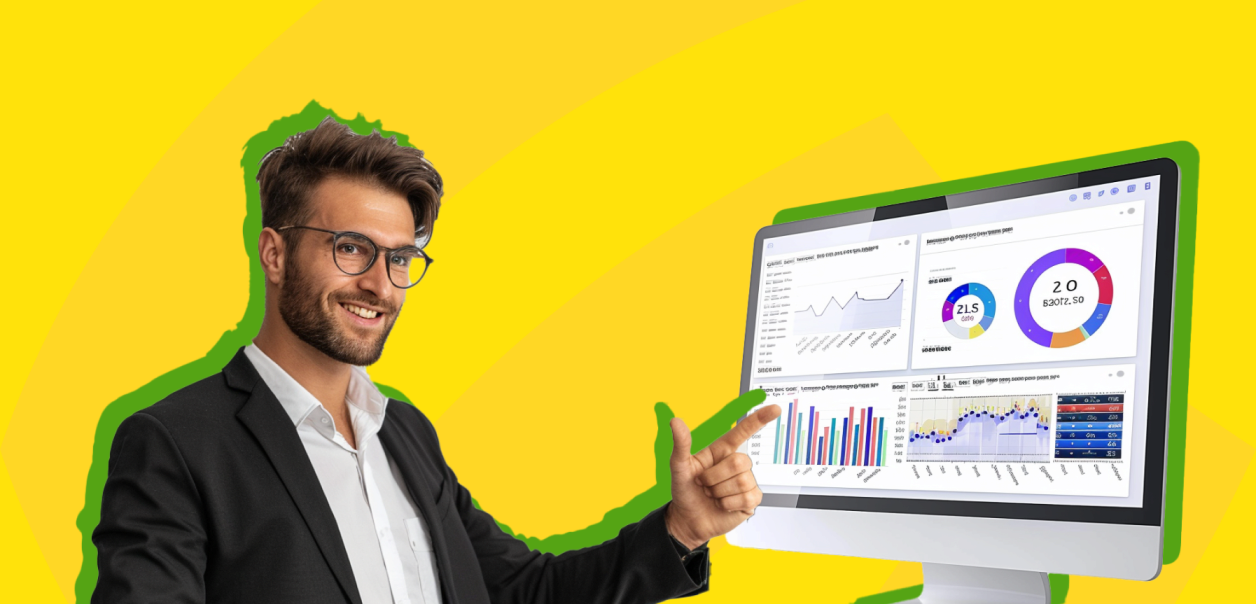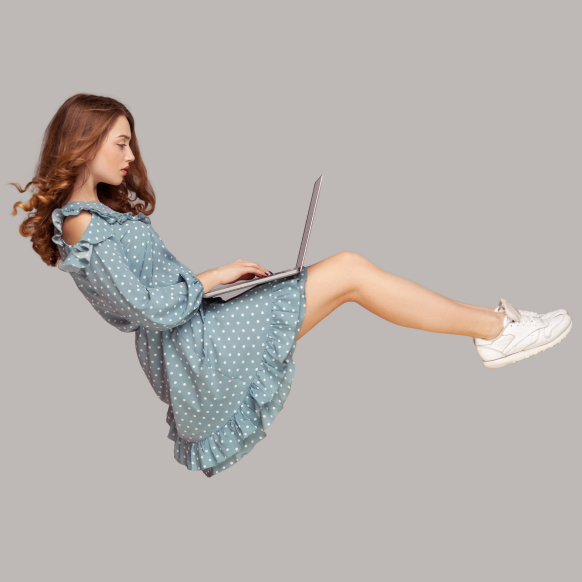App for an online store: How to make a business successful


Online stores are slowly but surely displacing their direct competitors in the market. Offline stores are in less and less demand from consumers, because sometimes it is extremely difficult to find the necessary goods in the vicinity, and the choice of goods is limited to your location. In the case of online stores, it absolutely does not matter where you live, to order a product, you only need to find a resource that delivers goods to your locality. It is no wonder that online stores will soon completely fill the retail market, and their offline versions will turn from once popular boutiques into points of delivery of goods.
Trade on the Internet is a progressive business with a high level of competition. That is why every entrepreneur first of all thinks about how to surpass their competitors and develop their business as quickly as possible. At the time of the popularity of offline stores, in order to make their business more attractive to consumers, entrepreneurs resorted to a huge amount of banner and radio advertising, decorated their exhibition halls with goods and tried to make the display of goods as attractive and thematic as possible. With the passage of time and the arrival of online stores, not much has changed, now what your website looks like, your product catalog, and how successful your advertising is can tell you how successful your business is.
Entrepreneurs from all over the world are puzzling over how to deliver even more comfort to the consumer and attract him to their resource, and the most convenient solution to this problem is smartphone applications. More than 50% of Internet users use a smartphone to order food delivery and purchase goods on the Internet. This is convenient, fast and can be done anywhere in the world, which is why creating an app for an online store has become a real trend among entrepreneurs. But how do I create an app for an online store? What should you pay attention to and what features should such an application have? In this article, you can find answers to all your questions. We will look at the structure of the online store application, the features that it should have, and the details that will help you make your business more successful than your competitors, let's get started!
How to create an app for an online store: Where to start
When creating a website for your resource, the first thing you need to do is analyze the market and identify your closest competitors. With the app for the online store, everything is exactly the same. How successful your competitors are and how crowded your chosen niche is will determine how difficult it will be to make your business profitable.
Before you start developing an application for your resource, you need to:
-
Conduct a competitor analysis
Despite the fact that the creation of applications for online stores is a new trend in the field of inter-commerce, not all of your competitors can create such software. The development of such an application is a matter that is several times more difficult than creating a regular website, which means that such development requires more time and effort.
In order to achieve maximum success, you need to analyze the performance of your competitors before you start developing an application. Do you need to find out which online stores competing with your resource have already got their own personal app? What do your competitors offer and how do they attract users to install the mobile version of their online store for different operating systems? Finally, what the structure of their apps looks like, and what you as a user would like to add or change.
With this data, you can already create an approximate structure of your application, and based on it in the future, create software for your resource. If you are not well versed in competitive indicators and do not know what to focus on when creating an application plan and structure for your online store, contact the specialists of the Glyanec web studio. Glyanec developers will analyze your chosen competitors and develop an application for your online store in a short time.
By working with specialists, you can not only be sure that you will get the highest quality product, you will also free up your time, and you will be able to use it to formalize contracts with future suppliers or to analyze the advertising campaigns of your competitors. To become a market leader, you need to know everything about your competitors ' advertising and how they attract customers. With this information, you can correct the mistakes of competing resources and take the first place in the niche that interests you.
-
Create a goal
The goal determines the means to achieve it, which is why before you create an application for an online store, you should decide what you want to achieve with it. It is important that the goal you choose does not depend on the application itself, and is part of your business. Getting the desired number of downloads is not a goal that will benefit your business. But the growth of sales as a percentage is a goal that an app for an online store can help you achieve.
Work out the structure in detail and is scrupulous about all aspects of development
Creating a business application is a long and complex process, especially if you have never had experience in similar specifics. To achieve the maximum result, you need to use all your strength and all your resources. This is the only way you can create a competitive app that can take your business's success to a whole new level and leave your competitors far behind.
By adhering to these three points, you automatically increase the chances of your future application being successful. These are the fundamental building blocks of any successful application and business in general. Therefore, before you start developing an application, we recommend that you take each of them responsibly.
Development of an online store application: The question of the value of the offer or how to attract customers
In 2021, users are increasingly abandoning the use of web versions of services and increasingly giving their preference to applications that they can access from the screen of their smartphone. Thanks to the popularization of mobile application development, there are already hundreds of companies on the e-commerce market that have already developed and successfully launched their services for various operating systems.
In order to achieve your desired goals, you need to think about a profitable offer that you can use to attract your potential customers to your resource. This offer should be different from what your competitors are offering. Otherwise, your resource will be lost against the background of other, more established online stores and you will not be able to achieve the desired result. But how can you attract users to your app?
1. Website in one app
The problem with most applications for online stores is that the developers greatly simplify their functionality, compared to the original site. Often, such applications do not support most of the features of the web version, and this causes users a number of inconveniences.
By creating an application with functionality commensurate with the capabilities of your main online resource, you can simplify the purchase process for your users and consequently attract more potential customers. If your customers do not have to search for "more pictures” or" technical specifications " of their chosen product on third — party resources, they will definitely be grateful to you and will make purchases in your app in the future.
2. Bonus system
All people love when they are rewarded or given something. This fact comes in very handy when you need to make the application of your online store more popular and increase the number of downloads, simultaneously expanding the customer base. To do this, you can take advantage of discounts available only in the app or special mechanics of interaction with users. For example, some mobile operators offer a "shake-get a prize" feature in their apps. So, the user, twirling his smartphone in his hands, can get a favorable offer for the tariff or additional megabytes of Internet. In the same way, it works in online commerce, a perfect example of the” special privileges " of a mobile application is AliExpress. In the marketplace app, you can get a daily discount, a coupon, or even a free product, provided that it is constantly used.
Think about how you can attract your potential buyer before you create an app. This will save you a lot of time and at the same time help you build expectations for the growth of sales and popularity of your resource at the first stages of development.
3. Communication with customers
This is another important aspect of the app for the online store. One of the most common reasons that users do not trust Internet resources is the lack of an opportunity to comfortably ask a question to managers and specialists. Nowadays, more and more people are giving up frequent use of mobile communication, its place is taken by text and audio messages in dozens of different messengers. An opportunity not to call, and write in online chat with the store Manager to clarify all user information is opportunity, which definitely comes in handy for many of your potential customers.
Think about how you can build a connection between your company's managers and consumers so that the latter do not feel uncomfortable, but on the contrary, receive the necessary information in the most comfortable conditions.
All of the items listed above are a list of tasks that you need to complete before directly developing the application itself. But what features do you need to implement in your online store app? How to create a successful app for an online store and what specialists will you contact? Next, we will look at this issue in detail.
How to create a mobile app: The app structure of your online store
The issue of comfort for applications is as important as for any web resource. That is why it is important that your client has the opportunity to use all the necessary functions to make a purchase decision. When creating an application for an online store you need to place it in it:
1. Convenient product catalog with detailed filters
The product catalog in your app should not be smaller than on your website. Among other things, you should also repeat or even improve the product selection filters in your app, compared to the site. This way you will give your potential buyer the opportunity to choose the product they need as comfortably as possible and will only stop the pleasant experience of working with your application.
2. The “buy online " function”
At the moment, Internet users are increasingly careful about their personal time. If even 5 years ago, paying for goods using an online wallet, in which you previously had to log in — was the norm, now with the advent of comfortable contactless payment, stores that still use similar payment models have long been at the bottom of search results.
In order for your app to be as comfortable as possible for users, you need to add the online payment function. It will be useful to be able to pay directly from your phone, using Google Pay and Apple Pay services. So your users will not have to spend extra time transferring money from their banking app, and the level of loyalty to your service will increase somewhat.
3. " Add to favorites”
The ability to create a wishlist is a trend that appeared in online trading a few years ago. Its beauty is that even if the user currently does not have enough funds to buy the product he is interested in, he can add it to his favorites and purchase it later. At the same time, he will not need to spend his personal time on new searches. Use wishlist can increase the chances of purchasing a product in your online store, because if this function there is no potential client will have to look for any product like it to look in your app, if you turn to search engines and may find a better offer? In order to increase the chances of buying it in your app, we recommend that you add the "to favorites" feature to your app.
4. Recommendations
Recommended products are items that are related in one way or another to items that your potential buyer has already viewed. This feature has proven itself well on sites such as Prom.ua and AliExpress. With the help of recommendations, you can increase the turnover of additional products, which will not only increase the amount of profit from your business, but also give your client the opportunity to buy everything that he may need. Best of all, such a system shows itself in the trade of appliances, because for smartphones, laptops and televisions, there are many additional products that you can carefully offer to your buyer.
Each of these functions can affect the customer's decision to purchase a product on your site. Therefore, it is very important that you pay maximum attention to the implementation of each item and scrupulously treat the verification of their performance. By paying enough attention to the features of your app, you can make purchases more comfortable for users, and your app more popular.
How to create a successful app for an online store
He comfort of a potential buyer is very important, because it often determines whether the customer will buy the product from you, or go to your competitors. The structure, available functions, and design of your app also play an important role. If you want to create an application for an online store, but have never dealt with the development of software for various operating systems-contact the specialists of the design studio Glyanec. The team of the Glyanec web studio will develop an application for your online store and add all the features that you consider necessary. Web design Studio websites Glyanec develop unique design for the apps in your online shop, taking into account all your wishes and modernity, and thanks to the integrated approach and skill of the team you will be able to get a perfect app for the online store in a short time. To order the creation of an online store, the development of a landing page or the launch of contextual advertising, go to the "company services" tab in the site menu and select the service that suits you.
Website development for the Polish market!

We are your reliable partner in setting up and developing your business in Poland. Our company offers a full range of services for the launch and successful operation of your company in this country. We specialize in the development of websites in Polish, adapted to the needs of the local audience. Our web development professionals have many years of experience in designing and optimizing websites for the Polish market, which will allow your business to compete effectively and attract customers.
Our services include:
- Polish website development: Our website development professionals will create an effective and attractive Polish-language website for you that will attract the attention of local customers.
- Marketing services in Poland: We will develop a marketing strategy for you that will allow you to set up effective advertising campaigns and attract your target audience.
- Rebranding your business: Our rebranding experts will help you update your company's image and emphasize your strengths to attract new customers.
Cooperation with us covers a wide range of services for entrepreneurs and companies expanding their activities in the international market. We offer professional translation of documents and information, advice on local banks and financial procedures, assistance in registering a business and opening a branch, as well as support in choosing a payment and delivery system. In addition, we can provide you with contacts for registering a legal entity in Poland, office selection, accountant contacts and other services. We make sure that your business initiatives are successfully implemented in the new market conditions.

Address of the office in Poland: Biuro 315, Regus Equal Park 3rd Floor, Wielicka 28, 30-552 Kraków
Don't waste time - choose our company for a successful start in Poland. We know how to make your business competitive in this market!
For a successful start in Poland, please contact us:
📞 Phone: 0 (800) 750-751
📧 E-mail: [email protected]
How a website audit can transform your business

A website audit is not a simple check, it is a necessity that allows you to deeply understand both the technical and marketing aspects of your site. Is your website optimized for search engines? Does it communicate effectively with your potential customers? The answers to these questions can radically change your approaches and strategies. Ordering a website analysis can reveal hidden issues that are holding back your site's lead generation and customer acquisition potential. Whether you're looking to improve your site's search engine rankings or increase user satisfaction, an audit can provide you with the tools and guidance you need.
We will look at how a carefully prepared audit can significantly improve your website and make it more competitive. We will discuss what aspects of a website are checked during an audit, what benefits it can bring to your business, and how you can order a website audit from professionals to ensure the best results.
Why does your business need a website audit?
Excellent website usability is not just a nice bonus, but a critical condition for ensuring online success. A website audit allows you to analyze in detail how conveniently and efficiently users interact with your site, and how this affects your business's ability to achieve its goals. Here are some reasons why it is important:
- Increase user satisfaction: An audit reveals navigation and interface issues that may prevent users from easily and intuitively finding the information they need or performing the actions they want on your site. Improving these aspects can significantly increase your visitors' satisfaction.
- Reduce bounce rate: When users find it difficult to navigate the site or perform the necessary actions, they are more likely to leave the site without converting. An audit helps to identify and fix design elements that can lead to a high bounce rate.
- Increase conversions: Website optimization can have a direct impact on your conversions. For example, simplifying the checkout process or improving the visibility of a call-to-action button can significantly increase the number of successful transactions.
- Search engine optimization: SEO audit and optimization is part of the overall website audit and focuses on aspects that affect your website's visibility in search engines. Analyzing keywords, meta tags, URL structure, and other SEO practices will help to push your website higher in search results.
- Improving accessibility: The audit also assesses how accessible your site is to people with disabilities. Ensuring accessibility not only expands your target audience, but also emphasizes your responsibility as a business.
- Optimization for mobile devices: Nowadays, it's important that your website is optimized for mobile users. An audit will help ensure that your website works efficiently on all types of devices, improving the overall user experience.
Ensuring a high quality website is an investment in customer satisfaction and the efficiency of your online space. Ordering a professional audit can help you identify critical issues and resolve them before they negatively affect your business. You can read more about SEO promotion in the article "Features of SEO optimization of an online store"
How the audit is conducted and what we offer
Website audit is a complex process that includes several key stages. Each stage has its own specifics and requires a detailed approach. Our team of specialists uses advanced technologies and techniques to ensure the highest quality of services. This is how we work:
- Audit planning: First of all, we identify your business goals and website features. This helps us to prepare a personalized audit plan that takes into account all the necessary aspects: from technical analysis to user experience assessment.
- Technical audit: At this stage, we check the technical component of the website: coding, information architecture, compliance with SEO and web accessibility standards. We identify technical errors that may prevent the site from being indexed by search engines or impair overall performance.
- User experience (UX) audit: We analyze how visitors interact with your website and evaluate the usability of the interface. In this context, we can also put a heatmap on the site. Heatmaps allow you to visualize where users click most often, how long they stay on certain segments of the page, and how they scroll through the page. This is very useful for improving page structure and content.
- Report and recommendations: At the final stage, we compile a detailed report that includes all the issues we found and specific recommendations for fixing them. We provide practical advice that can be implemented quickly to improve your website.
- Support and optimization: After the audit, we also offer website maintenance and optimization services. This can include regular updates, monitoring of website performance, and additional checks for compliance with changed requirements or technologies.
Our goal is not just to identify problems, but to provide you with the tools and knowledge to solve them effectively, so that your website not only works at full capacity, but also helps you grow your business.
Glyanec provides professional website audit services that include technical audit, usability testing, SEO optimization, and analysis of your website's accessibility and security. We use advanced tools, such as heatmaps, to analyze user behavior in depth, allowing us to offer targeted and effective solutions for each client.
If you want to ensure that your website functions at the highest level, meets all modern requirements, and works as a powerful tool for your business, contact us. Order a website audit in Glyanec today and take the first step towards improving your online space. We guarantee a professional approach and dedication to achieving your business goals.
What are the advantages of websites over mobile apps?

Different companies are faced with the choice between developing mobile apps and websites every day. While mobile apps may seem convenient and innovative, it's important not to ignore the numerous advantages of websites. Ordering a website is not just an investment in an online presence, but a strategic decision that can significantly reduce development and maintenance costs, provide a wider audience reach, and improve search engine rankings.
We'll take a closer look at why websites compare favorably to mobile apps, analyzing their functionality, accessibility, and maintenance costs. The importance of websites in today's digitalized landscape cannot be underestimated, as they play a key role in attracting customers, expanding the market, and optimizing the user experience.
What is a website and a mobile application?
Websites and mobile apps play vital roles in promoting a business, but they have significant differences. A mobile app is a program downloaded and installed on a mobile device that can use the phone's system capabilities, such as a camera, GPS, or gyroscope. They can offer a more personalized experience, but they require significant investment to develop and maintain.
Therefore, choosing between website development and in-house development usually turns out to be a more profitable and effective solution.
Main advantages of websites
Websites offer a number of benefits that make them an attractive choice for businesses of all sizes. Let's take a look at a few of the key benefits you should consider when considering a website for your business.
- Universal access: One of the main advantages of websites is their accessibility. Visitors can access your site from any device that has an Internet connection, regardless of the operating system. This provides a wide audience reach and the ability to attract more potential customers.
- Cost-effectiveness: Ordering a website is often much cheaper than developing a mobile app. The cost of developing and maintaining a website is lower because you don't need to create separate versions for different platforms, such as iOS and Android. In addition, updates and changes to the site can be implemented faster and easier, which reduces overall maintenance costs.
- SEO and marketing benefits: Websites provide better opportunities for search engine optimization (SEO). This means that your website can rank higher in search engines, increasing the chances of being discovered by potential customers. Optimizing your website for search engines helps to increase its visibility and attract more organic traffic.
- Improving the user experience: Websites can offer a rich and user-friendly user interface that is adapted for different devices, including mobile phones, tablets, and desktops. With a responsive design, users can easily navigate the site, which improves the overall user experience and can increase conversion rates.
With these benefits in mind, building a website is a rational choice for businesses looking to maximize the benefits of their online presence. Not only do websites save money and resources, but they also provide ample opportunities to scale and grow your business.
Why do users abandon mobile apps?
Despite the significant development of mobile technology and the increase in the number of available apps, many users still prefer websites. This is due to a number of reasons that point to certain disadvantages of mobile apps and limitations that can affect the user experience.
Most users do not see the need to install mobile applications when they can easily access the same services or information through a website on their laptop or smartphone via a browser. This is especially true for those services that users use infrequently or sporadically.
Additionally, users emphasize that mobile apps often take up too much space on their devices, which can be critical for those with limited storage space. There are also concerns about battery and mobile data consumption, especially when apps are running in the background or transferring large amounts of data.
Privacy and security issues
One of the biggest concerns that pushes users away from mobile apps is the issue of privacy and security. Many apps require extensive permissions to access personal information such as contacts, location, social media data, and even personal files, which raises concerns among users about how this data is collected, stored, and used. There is also a fear that mobile apps may be vulnerable to hacking, especially those that store sensitive financial data or personal information. Data breaches at large companies that have made headlines only reinforce these concerns.
These factors contribute to the fact that many users prefer to use websites that do not require a download and provide quick access to services without the need to install resource-consuming applications. This confirms that websites can be a more convenient and secure solution for many users. However, for many companies, creating a website will prove to be the most optimal solution to effectively attract customers and provide high quality service with minimal costs and complexity.
To summarize, a careful choice between website and mobile app development should be based on the specific needs of the business, its target audience, and available resources. However, for many companies, ordering a website will prove to be the most optimal solution that allows them to effectively attract customers and provide high quality service with minimal costs and complexity.
What are progressive web applications and what are their advantages

Progressive Web Applications (PWAs) are changing the way we think about what websites can do. This technology combines the best of the web and mobile applications, offering speed and usability that was previously only possible in apps. In this article, we'll take a closer look at what progressive web apps are, what technologies are behind them, their benefits, and key implementation considerations. We will pay special attention to how progressive web applications can transform your business by providing a better user experience and increasing productivity.
What are progressive web applications?
Progressive web applications are a type of software that is split into a website and a mobile application. This allows users to install web applications on their devices and use them in a similar way to regular mobile applications. An important feature of PWAs is that they use web browser technologies but offer functionality that is usually associated only with mobile applications.
The PWA concept was first introduced by Google in 2015. The goal was to make the web experience as convenient and fast as possible. Since then, the technology has gained significant development and support, especially from companies seeking to improve the mobile user experience without losing the versatility and accessibility of the web.
Technologies used in advanced web applications
Progressive web applications use a number of modern web technologies to provide users with an experience that is as close as possible to mobile applications. The most important of these technologies are:
- Service Workers - scripts that run in the background, independently of the web page, and allow you to manage network requests, cache resources, and use push notifications.
- Manifest file - a JSON file that allows developers to install a web application on the home screen, set the icon and the start screen.
- Using HTTPS - ensuring the security of user data and the reliable operation of web applications.
Why progressive web applications are better than traditional sites
Improving the user experience
Progressive web applications are characterized by extremely fast loading speeds and high responsiveness, which is ensured by data caching and intelligent management of network requests. This means that users are able to access content instantly, regardless of the quality of their Internet connection, which significantly improves the overall user experience.
Offline access and support for push notifications
One of the defining features of PWA is the ability to work offline. This is achieved thanks to Service Workers technology, which allows web applications to cache important content and provide access to it without the need for an Internet connection. In addition, PWAs can use push notifications to inform users about news, updates, or special offers even when they are not using the web application.
Increase engagement and conversion rates
Thanks to better user experience and offline capabilities, PWAs demonstrate high rates of user engagement and increased conversions. The ability to load quickly and run smoothly on any device ensures higher customer loyalty and a higher likelihood of completing targeted actions, such as making a purchase or filling out a contact form.
Steps to implement progressive web applications in your business
Implementing progressive web applications may seem daunting, but with the right approach, the process can be efficient and smooth. Here are the basic steps to integrate PWA into your business:
- Audit the current state of the website - check if your site is ready for conversion to PWA. This includes ensuring HTTPS compatibility, site responsiveness on different devices, and the availability of all necessary technical aspects.
- Developing and configuring Service Workers is a key component of PWA that allows the website to work offline and use push notifications.
- Creating a web app manifest - a manifest allows users to add your app to the home screen of their devices, providing easier access and a more native experience.
- PWA testing - ensure that your PWA works properly across all devices and browsers, with special attention to offline mode and loading speed.
- Monitoring and updating - once your PWA is up and running, it's important to keep it up to date and make updates to resolve any issues or improve functionality.
To illustrate how easily and quickly users can install a progressive web application on their devices, we have prepared an animated GIF. This GIF shows the process from the moment a user visits a website to the moment they install the web application on the home screen of their mobile device. This demonstrates the simplicity and ease of use of PWAs, as well as their ability to offer a native experience through a web browser.

Progressive web apps are a powerful tool for business development, offering speed, convenience, and an enhanced user experience comparable to native mobile apps. They allow you to achieve a high level of customer engagement, provide the ability to work offline and send push notifications, which is critical in today's dynamic market. Thanks to their ease of installation and efficiency, PWAs can significantly increase conversion rates and improve the overall user experience.
If you're looking for a way to make your web experience more efficient and engaging, progressive web applications can be a great solution. Remember that proper implementation and ongoing updates are essential to the success of any technology solution. Don't hesitate to bring in professionals to help you optimize your website to turn it into a responsive web app and take full advantage of its capabilities.
Virtual fitting rooms in online stores: how artificial intelligence is changing shopping

In a world where technology is changing every aspect of our lives, online shopping has become one of the fastest growing areas. However, despite all the convenience that shopping from home offers, there is one problem that still makes many shoppers hesitate before clicking the "buy" button: the inability to try on clothes before buying. This is where innovative technologies, such as virtual fitting rooms, come into play, promising to revolutionize the way we buy clothes online.
Virtual fitting room is a cutting-edge technology that uses artificial intelligence and machine learning to allow customers to try on clothes virtually before making a purchase. This innovation has the potential not only to provide a better online shopping experience, but also to fundamentally change the entire retail sector.
Our company is closely monitoring this area of technology and expects its rapid development in the near future. We believe that the integration of such innovations will not only increase customer satisfaction, but will also significantly improve the efficiency of online stores by reducing the number of returns due to mismatched sizes or appearance of goods.
Evolution of virtual fitting rooms
From early experiments to today's advanced systems, virtual fitting rooms have come a long way. Initial attempts to implement digital solutions for trying on clothes were criticized due to poor visualization quality and limited functionality. However, with the advent of advanced artificial intelligence technologies and improved image processing algorithms, virtual fitting rooms are becoming much more accurate and useful for the end user.
The key to the success of virtual fitting rooms lies in the use of a range of technologies. This includes computer vision, artificial intelligence, machine learning, and image processing algorithms. These technologies allow to analyze users' photos in real time, adapting clothes to their body parameters. In addition, advanced interfaces ensure that these systems are intuitive and easy to use.
Benefits for consumers and businesses
Virtual fitting rooms offer significant benefits for both customers and store owners. For consumers, it is an opportunity to visually assess how the clothes will fit them without having to visit a physical store or wait for the goods to be delivered. This significantly increases customer satisfaction and reduces the number of returns. On the other hand, retailers are able to attract more customers by offering a unique shopping experience and reduce the costs associated with handling returns. As a result, virtual fitting rooms not only boost sales but also improve business sustainability.
Online fitting - how does it work?
Integrating a virtual fitting room into a website requires a comprehensive approach that includes the development or implementation of specialized software. This software uses artificial intelligence algorithms to analyze user-entered data, such as body measurements, or even real-time photos or videos to create an accurate virtual image on which to "try on" clothes.
Artificial intelligence plays a key role in the functioning of virtual fitting rooms, as it analyzes and processes user data to create an accurate three-dimensional model. Such systems can recommend the most suitable size of clothing, taking into account not only the size but also the personal preferences of users regarding the fit of clothing. The introduction of virtual fitting rooms is changing not only the way people buy clothes, but also the overall online shopping experience. Customers are able not only to visually see how the clothes will look on them, but also to experiment with different styles and colors without the need to physically visit the store. This interactive approach can greatly enhance the user experience, increasing shopping satisfaction while reducing the likelihood of returning an item due to a failure to meet expectations.
Advantages of online clothing fitting
The use of online clothing fitting technologies brings significant benefits that affect both the consumer experience and the efficiency and sustainability of retail business models. Let's look at the key aspects of these benefits:
Reducing the number of product returns
One of the biggest challenges for online retailers is the high number of returns, which is often due to mismatches in sizing or customer expectations of how the product looks. Online clothing fitting can significantly reduce this risk by giving customers a better understanding of how the clothes will fit them, which in turn leads to more confident purchases and fewer returns.
Increasing customer satisfaction and loyalty
Enhancing the online shopping experience through a virtual fitting room helps to increase overall customer satisfaction. Interactivity and personalization of purchases strengthen the relationship between brands and their customers, encouraging repeat purchases and increasing loyalty.
Impact on environmental friendliness and business sustainability
Reducing the number of returns not only improves economic efficiency for businesses, but also has a positive impact on the environment. Reducing the need to transport returned goods helps to reduce the carbon footprint of companies, making them more sustainable and environmentally responsible.
The future of the fitting room for an online store
One of the main trends is to improve the accuracy and interactivity of virtual fitting rooms through the expanded use of artificial intelligence and machine learning. This includes the development of algorithms that can analyze the more subtle nuances of users' figures, as well as integration with virtual and augmented reality to create a more immersive fitting experience.
Artificial intelligence not only improves virtual fitting rooms, but also opens up new opportunities for personalizing fashion offers. This can include automatic clothing recommendations based on previous purchases, lifestyle, and personal preferences, which will significantly improve the user experience and shopping efficiency.
By closely following these trends and actively experimenting with virtual fitting rooms, our company strives not only to optimize our customers' experience, but also to act as an integration leader in the market. Recognizing the importance of these innovations, we are confident that the further introduction and development of virtual fitting rooms will not only contribute to the growth of our company, but will also play an important role in shaping the future of online retail by making shopping more convenient, personalized and sustainable.
Just one step to your perfect website




